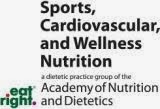May your turkey plump,
May your potatoes and gravy
Have nary a lump.
May your yams be delicious
And your pies take the prize,
And may your Thanksgiving dinner
Stay off your thighs!
~Anonymous
Somewhere in history, Thanksgiving was initially a holiday based on appreciation and a harvest. Then at some point in time we 'Americanized it' and 'super-sized it', maybe turducken-ed it a little. Once you throw in family you might want to see once a year (and that might be too often for some of us) and you may begin to wish there was a National Treadmill Day instead of Black Friday.
The following is a brief compilation of dietitians from blogs and other media 'weighing in' on this holiday and the upcoming season.
“Frugal”
Feasting — Help Clients Celebrate Thanksgiving’s Cornucopia of Foods in Modest
and Healthful Ways
By Christen C. Cooper, MS, RD
Today’s Dietitian
Vol. 12 No. 10 P. 66
By Christen C. Cooper, MS, RD
Today’s Dietitian
Vol. 12 No. 10 P. 66
·
“For many people, Thanksgiving brings to mind
fond childhood memories. Some recall eating a favorite dish, one whose
preparation was so time consuming that it was enjoyed only once per year.
Others remember helping loved ones serve a Thanksgiving meal or learning how to
make a family recipe. Still others recall the moments of relaxation and
celebration after the dishes were washed, the political arguments ended, and
attention shifted to parades and football games.”
Keeping Thanksgiving
Traditions
Today, families will gather around dining room tables to
give thanks, spend time together and eat. Since Thanksgiving involves food —
and often lots of it — inviting many cooks into your kitchen can be a fun way
to pass down family traditions. Here are few ways to keep everyone involved:
- Invite
children to partake in the preparations. Whether it's helping out with a
specific dish or making decorations for the table.
- If you
are cooking a dish that has significance to your family history, tell its
story.
- Go
around the table and share favorite Thanksgiving memories.
And while you are celebrating older traditions, start new
ones, too. Go for a walk after dinner, watch family movies or try a new healthy
recipe.
Produced by ADA's Strategic Communications Team
From The Nutrition Blog Network:
As
the holidays approach, be aware of your fast food splurges
From: Eat to Compete |
November 17, 2012
·
Summer
brings competitions for many athletes; a well-stocked pantry/refrigerator is
critical. It is hard to follow my advice of building your "plate" at
meals if the right food is not available to do so. Use this list to help you
get started at the grocery store. This is not all-inclusive, but is a...
Dream Thanksgiving
Menu & the Right Turkey to Serve
From: Food Trainers | November 2011
·
Set ups are so risky. "There’s someone you
should meet" makes me want to bolt instantly whether it’s personal or
work-related. So when a good friend made an e-introduction telling me about New
York Mouth, a site for "indie food" I was skeptical to say the least.
My skepticism lasted about 30...
--
Gina Lesako RD, LD is the SCAN blog coordinator (those interested in writing for SCAN can email her directly at glesako@gmail.com). She can also be found blogging at http://dietitianseatchocolatetoo.blogspot.com/). Find her on SCAN: http://www.scandpg.org/dietitians/15720/
Gina Lesako RD, LD is the SCAN blog coordinator (those interested in writing for SCAN can email her directly at glesako@gmail.com). She can also be found blogging at http://dietitianseatchocolatetoo.blogspot.com/). Find her on SCAN: http://www.scandpg.org/dietitians/15720/
